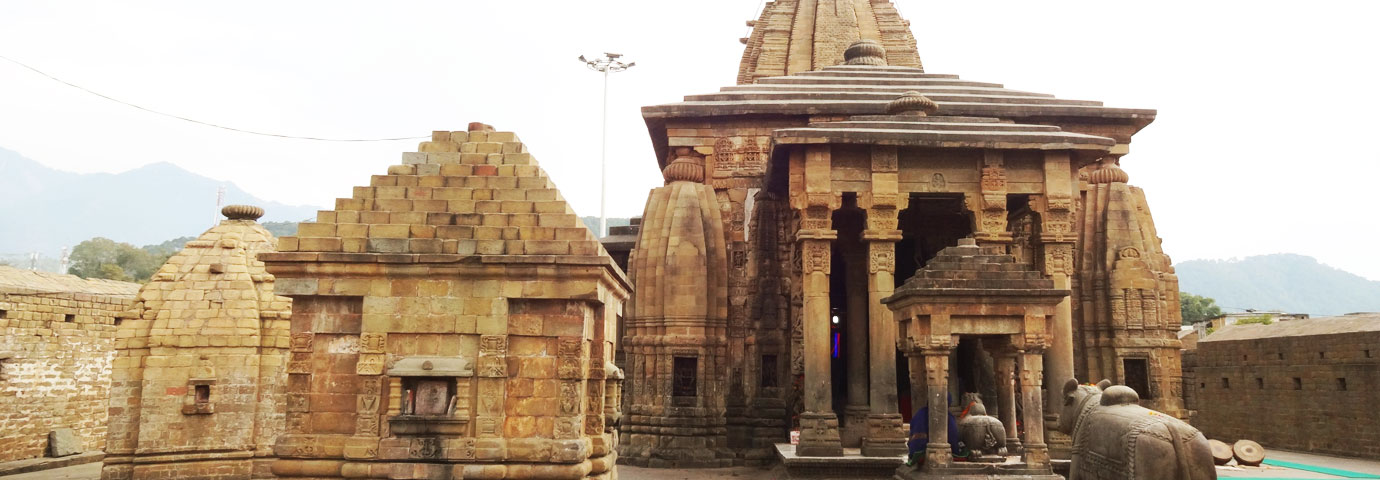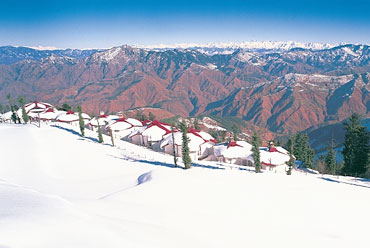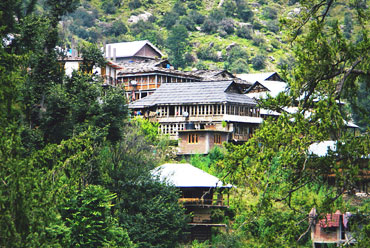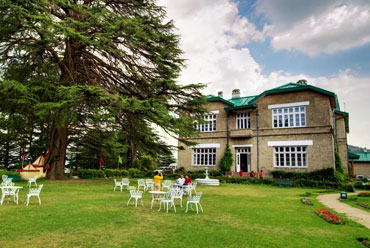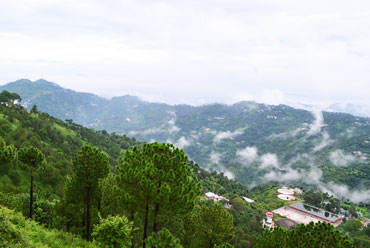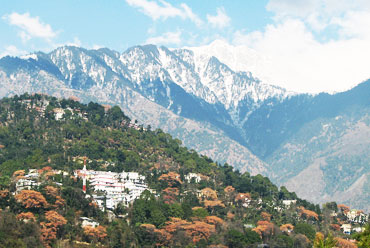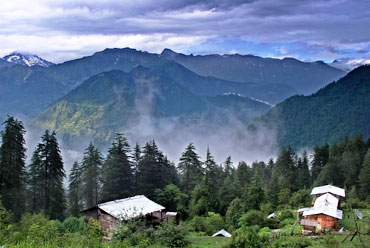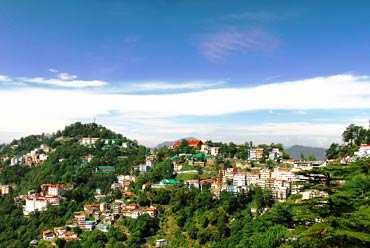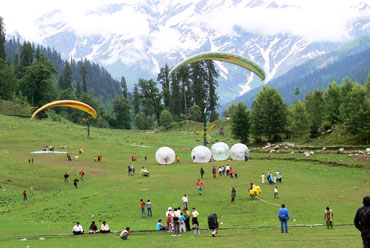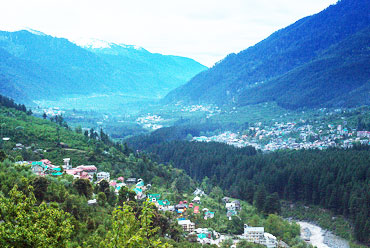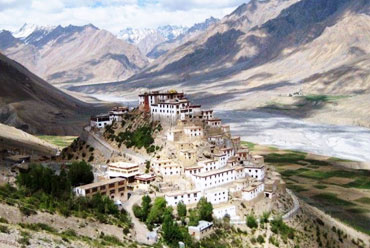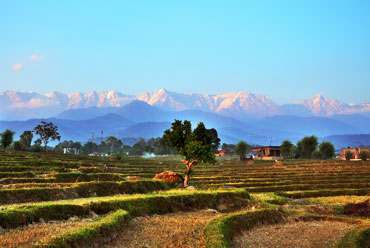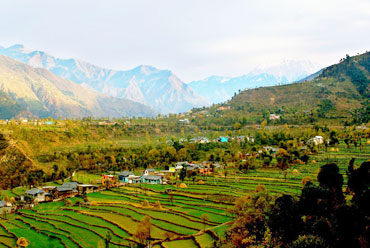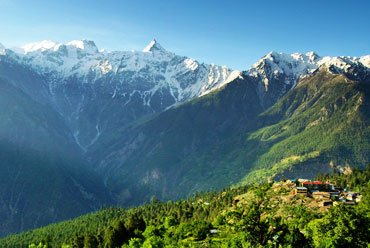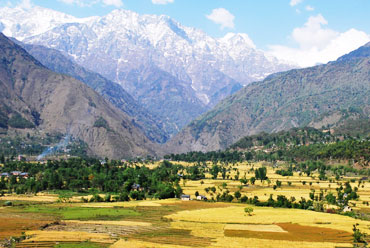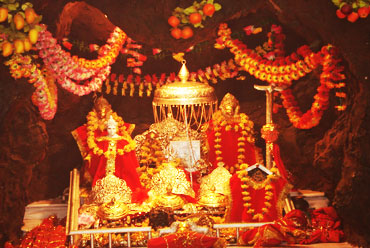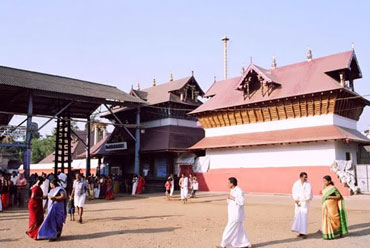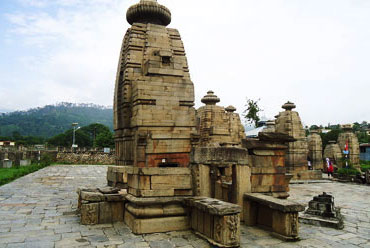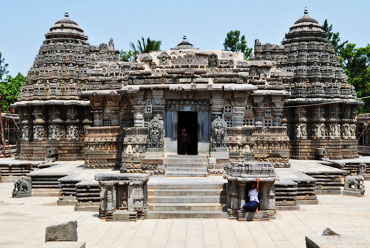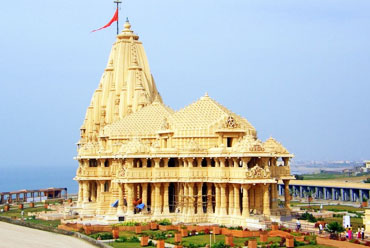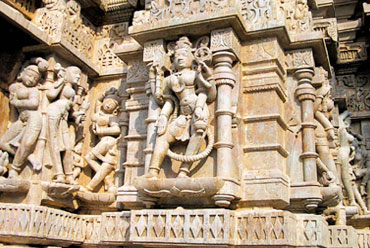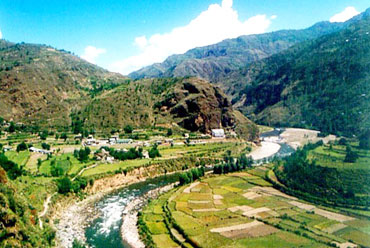Tourists Attractions
Baijnath retains much of its original mountain beauty. The snow capped ranges of the Dhauladhars tower in the north. Closer to Baijnath, the scenery becomes mellow with line of hills together with velvety meadows. There is a profusion of ferns and wildflowers, which remain in full bloom from the spring, through the cool summer, until autumn.
The scenery is enhanced with the river Beas, the wandering shepherds, slate-roofed homesteads and watermills grinding grain. There are the forests of oak and cedar and the Indo-German Forestry Project. The tea gardens at Palampur and elsewhere add to the gentle, soothing beauty of the Kangra Valley.
Shrine - The temple of Baijnath is remarkable for its unique, highly imaginative design and skilled workmanship. However, it has undergone changes and many of its old features-planned by two gifted craftsmen from the town of Kangra-have disappeared during renovations. Inscriptions record that Navaka and Thoduka constructed the lofty temple of Shiva. They fashioned it in the shape of a mandapa. On it glitters the figures of the crowd or ganas (the people).
The shafts of the pillars are classically designed. Deities in stone, including the statues of Ganga and Yamuna, stand at the door of the temple. In a place on a wall can be seen the striking image of Surya-the Sun God-wearing a delicately laced jacket. Graceful balcony windows, ornamented foliage and carvings lend variety to the stately structure.
The lingam of Vaidyanath (Lord Shiva) resides inside. Many people travel to Baijnath in the hope that the Lord of Physicians will cure them of their ailments. The water at Baijnath is reputed to possess remarkable digestive properties and it is said that until recently the rulers of the Kangra Valley drank water only obtained from Baijnath.

